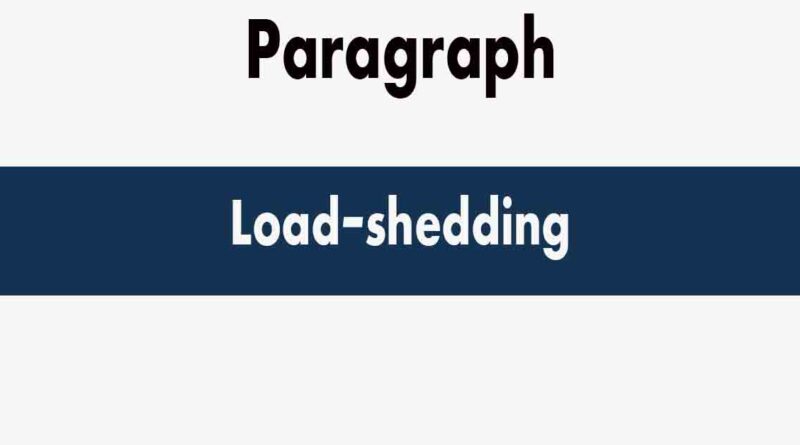Load shedding paragraph for class 6, 7, 8, 9, ssc and hsc
Load shedding paragraph for class 6, 7 and 8
Disconnecting the load means interrupting the power supply. Linka has become the fear of people from all walks of life. Load shedding occurs when power generation is less than demand, and when power is not scheduled.
This creates problems with far-reaching consequences in the socio-economic development of the country. Homes, factories, factories, businesses, shops, hospitals – all become victims.
The start-up of plants, factories and industry will stop. Power outages limit productivity, making home life miserable. Housewives grope in the kitchen in the dark. Suffering of students due to dismissal cargo beggar description.
Patients also suffer terribly from reduced workload. Operations are suspended. Food stored in the refrigerator will rot. The. goods stored in cold stores are perishable.
Unloading actually causes great suffering to people and irreparable losses to the country. All life – domestic and industrial – stops. Every effort must be made to stop the load shedding.
Paragraph:- A computer paragraph for class 7, 8, ssc and hsc
Load shedding paragraph for class 9 and 10
Load shedding is a term used to describe the deliberate and temporary interruption of electricity supply to certain areas or regions. It is usually implemented by power companies when there is an imbalance between the demand for electricity and its supply.
Lightening can occur for a variety of reasons. Insufficient power generation capacity, maintenance of power plants or transmission lines, equipment failures, natural disasters, or unexpected increases in electricity demand can all contribute to the need for load shedding. In some cases, financial constraints or insufficient infrastructure may also play a role.
The effects of load shedding can be significant and wide-ranging. It disrupts daily life, affecting homes, businesses, industries and essential services that rely on consistent electricity supplies. Productivity declines, businesses may suffer financial losses, and critical services such as hospitals, communications networks, and transportation systems may be severely affected.
Overall, load shedding is a temporary measure taken to balance the supply and demand of electricity during periods of shortage. While this may cause inconvenience and disruption, it serves as a reminder of the importance of sustainable energy practices, efficient infrastructure, and efficient management of electricity resources.
Load shedding paragraph for HSC
Load shedding refers to the deliberate and temporary interruption of electricity supply to different areas or regions in order to balance the demand and supply of electricity in the grid.
It is usually implemented when there is insufficient electricity supply to meet the total demand, which can be caused by various factors such as power generation failures, transmission restrictions or increased demand during peak periods.
During load shedding, utility companies or network operators divide the available electricity supply into different blocks or time slots and alternate blackouts between different areas. This rotational approach ensures that the burden of load shedding is shared by all consumers, rather than a specific area facing long-term outages.
Efforts are constantly being made to minimize load shedding through measures such as increasing power generation capacity, improving grid infrastructure, promoting energy efficiency and promoting the use of renewable energy sources. Governments, energy companies and consumers all play a role in managing the demand for electricity and ensuring a reliable supply of energy.




